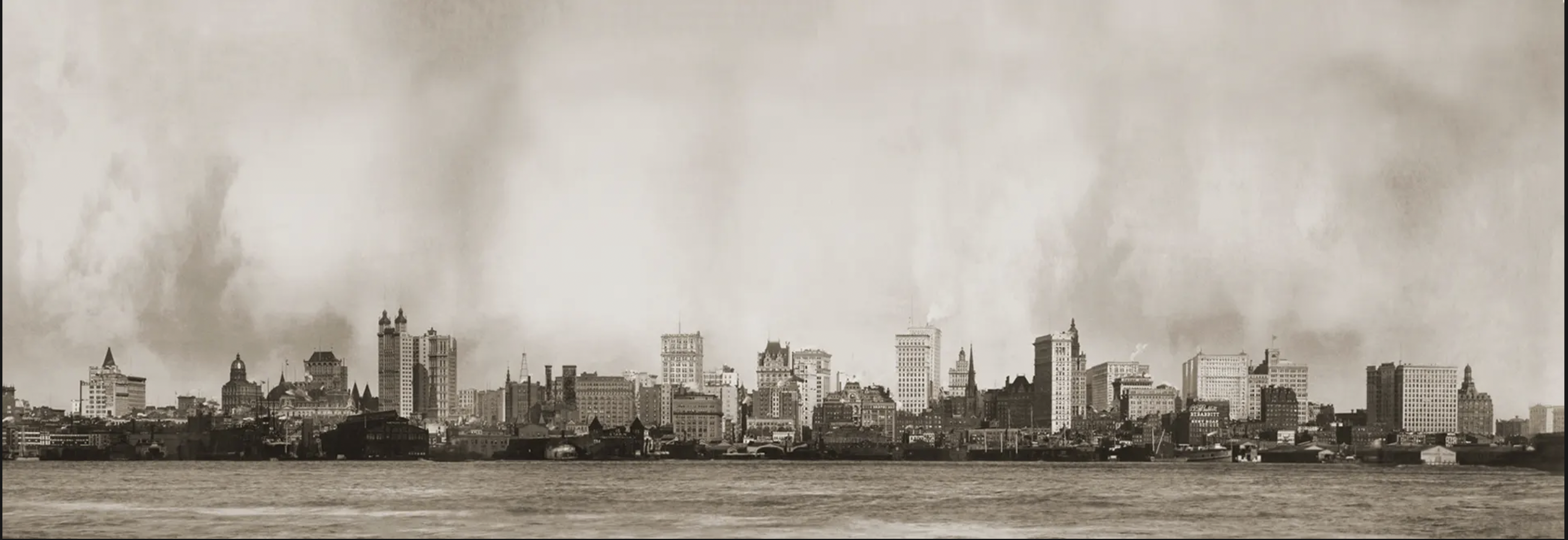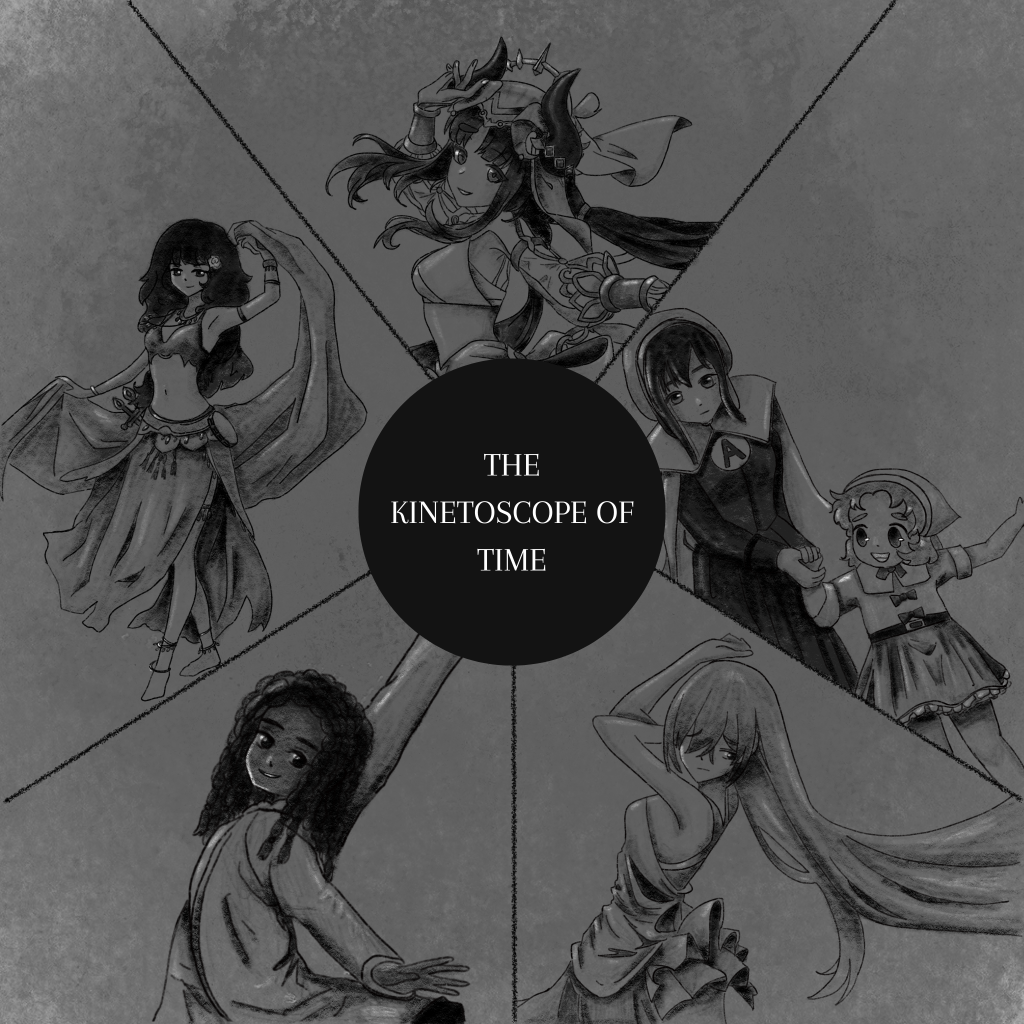
The Kinetoscope of Time
Creative Response
by Nivedha S.

About My Response
As a reader, I love having visual aids to go along with a novel. I’ve always enjoyed art forms such as animation, comics, manga, and illustrated books. I especially love when the illustrator inserts their own interpretations, as it allows me to perceive the work in different ways that deviate from my own imagination. For example, I read the “dances” section of this work through a feminist lens, and wanted to depict this interpretation through art work. Having this comic-style accompaniment may also be an added benefit to readers like me who appreciate visuals/art alongside their story.
The events described in the Kinetoscope of Time are broken into two major sections: the dances and the combat. Each of these sections was further broken down into five specific events. I wanted to illustrate the dancing parts of the short story specifically, as it carried a lot more meaning to me, so I decided to create one section of art for each dance scene.
I used the Procreate app on my iPad to create this digital art. I used a square page for the sake of symmetry and divided it into five parts-one for each dance scene. My original plan was to form an initial sketch, finalize the line art, and then color it in. However, after reaching the second step, I decided instead to do the shading in black and white. I felt that it would represent the old-timey cinema feeling that the story emanated. The kinetoscope parlors that Matthews visited and probably based the story on certainly didn’t showcase color, so that’s probably not the kind of scene he had in mind while writing the story.
In my final version, I went over the cleaner lines of the image with a harsher brush and darkened the shading, heightening the contrast between the lighter and darker parts of the drawing. I wanted to showcase the hardships that all of the women were facing in their stories through the presence of darkness and shadows, but also illustrate hope, freedom, and autonomy by juxtaposing the shade with sharp lighting.
Deeper Dive
As previously mentioned, I believe that there are two major themes showcased by the dancing scenes in The Kinetoscope of Time. One, represented by the shadows, tells the tale of women’s hardships throughout history. The other presents hope for a better future, or even a way out of their current situation.
Salome
Salome seems to have no autonomy in her story. She is entertainment for her father, sexualized by the court (and the main character himself), and used by her mother. In the Bible, she is not even referred to by name but rather as “Herod’s daughter” despite playing a major role in the death of a significant figure. She is seen as an object, a possession, a means to an end. Even when she is granted a wish through her own talents, she is unable to utilize it for herself, deferring instead to her mother and simply repeating another’s wish.
Still, she possesses power. Through her own talent of dancing, she has sway over the men who are entranced by her beauty and allure-“The girl was a mistress of the art; and not a man in the room withdrew his gaze from her till she made an end and stood motionless before the ruler” (Matthews). She even has enough power to request the execution of a revered man, though it may not have been her own wish. In the story, she is seen smiling, enjoying herself even though she is on display for the court and being used to suit her mother’s whims. Although she may be lacking autonomy in her story, she is able to find peace and hope in her situation.
The Hunchback of Notre Dame
Esmeralda is similar to Salome in the way that she is depicted and perceived. She is sexualized by the people around her and seen solely as a possession. The men she knows hardly care about her feelings, and throughout her story, she is pursued by an evil man, Frollo, who wants to make her his. She is falsely accused of being a witch solely due to being a woman. She is captured, imprisoned, forced to confess to crimes she did not commit, then nearly forced into an engagement with Frollo to get out of that situation. Even the man she loves does not fully respect her as a woman.
However, like Salome, she also holds power over the men around her. Her charm and allure, while unfortunately leading to her sexualization, can also be used as weapons. In addition, Esmeralda has the fierce spirit of a fighter. In the original story, despite being threatened by Frollo time and time again, she never submits to him-even when faced with death. In Matthews’ depiction of her dance, she casts aside her tambourine in exchange for a pair of swords. She incorporates these weapons into her dance. It’s as if she’s showcasing the two sides to her personality-she can be a devastating force of beauty and charm, but she is willing and capable of fighting back and won’t let people take advantage of her.
The Scarlet Letter
In her story, Hester Prynne is condemned by her Puritan neighbors, shamed as an adulterer and an evil, sinful woman. She had little rights to begin with as a woman, but this added sin has almost completely deprived her of her autonomy. To make matters worse, she must carry a badge of shame-the large scarlet A-on her at all times.
In a way, Hester fights back against the stringent rules that Puritan society imposes on women by being sexually liberated, but she also quietly accepts the penance that the society imposes on her. However, she carries love and hope in the form of Pearl. Pearl is the embodiment of her sin, and should be a punishment, but is viewed by Hester as a blessing. By loving and caring for Pearl, she is defying the way that society wanted her to be.
Topsy
Right from the beginning, Topsy is introduced as a caricature-an unruly, wild child who describes herself as “born wicked,” was abused by her former owners, and is held in contempt by Miss Ophelia. She is oppressed in every way imaginable-her gender, her race, her status as a slave. In the scene that Matthews depicts, she is viewed as an object of entertainment and forced to perform in front of her owners for their amusement.
I believe that Matthews attempts to depict her introduction to this white Christian family as the “light” or “hope” in this situation. Eventually, she does have her relatively happy ending-she is “reformed” by Christian values and Miss Ophelia takes her north, frees her, and takes her in as a daughter. This still seems very backwards from a modern perspective, but for the time (and for a predominantly Christian audience, I imagined), it can be viewed as the hopeful ending relative to her past of despair, and the “reformation” that she went through was due to her own power.
A Doll’s House
In A Doll’s House, Nora’s status as a woman prevents her from finding happiness in several ways. First, she has to deal with her insufferably arrogant husband, who constantly patronizes her. Second, she is unable to sign off on her own loans as a woman, and so forges her father’s signature. Third, due to this, she is practically held captive by another man who also looks down on her, threatening to reveal this note.
Despite her situation, however, Nora displays her own autonomy. She defies misogynistic laws with the forgery, and further defies societal expectations by lying to her husband. Even in the end, when everything is going downhill, she tries to fight against her situation by distracting Torvald by her dancing. She knows her impending doom-a letter in the mailbox detailing the crime of her forgery-is waiting just off the screen.
Last Thoughts
No matter the era, women have historically experienced oppression, prejudice, and hardship. A glimpse of this is noticeable in each of the stories presented in the kinetoscope. But there is also hope in each of these situations, with the women fighting back against the roles assigned to them.
Something that greatly surprised me was reading deeper into Brander Matthews’ biography. I interpreted the dance scenes through a heavily feminist lens and after rereading the story multiple times was very sure that the author must share this belief, so I was shocked to hear that Matthews was actually extremely conservative and sexist, refusing to admit women to his courses.
However, I still enjoy the feminist interpretation of this work, despite the author’s original intention. As we’ve further explored with the article “What We Mean by Reading” by Elaine Auyoung, one story can be interpreted multiple ways depending on how you read it and the lens you view it through. My interpretation of the short story was due to my personal experiences in addition to the influence of popular culture and feminist literature. Obviously, not every reader who reads the raw text is going to arrive at the same conclusion as me (not even the author did that, clearly!), so I like the idea of being able to bring a fresh perspective to someone who may not even have thought about it in this way.
